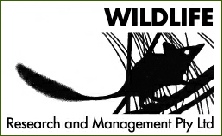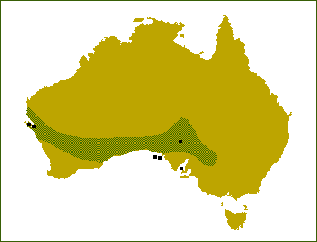The Greater Stick-Nest Rat (Leporillus conditor)
The Greater Stick-nest Rat is a threatened native rodent. It was once widely distributed
across southern Australia, declining rapidly with European settlement and the spread
of livestock during the nineteenth century. It became extinct on the mainland in
the 1930s, remaining only on East and West Franklin Islands off the coast of South
Australia. The species has been reintroduced to a number of islands in South Australia
and Salutation Island at Shark Bay, Western Australia.

They are renowned for the construction of large communal nests made of branches and
lined with grass and soft vegetation, and a gentle nature that makes them easy targets
for predators. The rats are exclusively herbivorous and eat leaves and fruits of
succulent plants such as bluebush and saltbush. One to three young are born after
a gestation period of 44 days, becoming independent two months later. They can breed
all year, and are capable of producing two or three litters per year.
The species has been successfully reintroduced to a number of islands, however most
attempts at mainland reintroductions have been unsuccessful. The reintroductions
have met with failure due to predation by introduced predators - foxes and feral
cats, and through a lack of cover to avoid predation by introduced and native predators,
such as goannas and owls.
Greater Stick-nest Rats were reintroduced to a 1400 hectare enclosure near Roxby
Downs in South Australia in 1998, and the population is being monitored. In August
and October 1999, and October 2001, Greater Stick-nest Rats were released at Heirisson
Prong, Shark Bay, Western Australia. Forty eight animals were released in a co-operative
effort between CSIRO, the Useless Loop community, Shark Bay Salt Joint Venture, Earthwatch
volunteers, and the Western Australian Department of Conservation and Land Management.
The history of this population on Heirisson Prong is detailed in a published paper.


